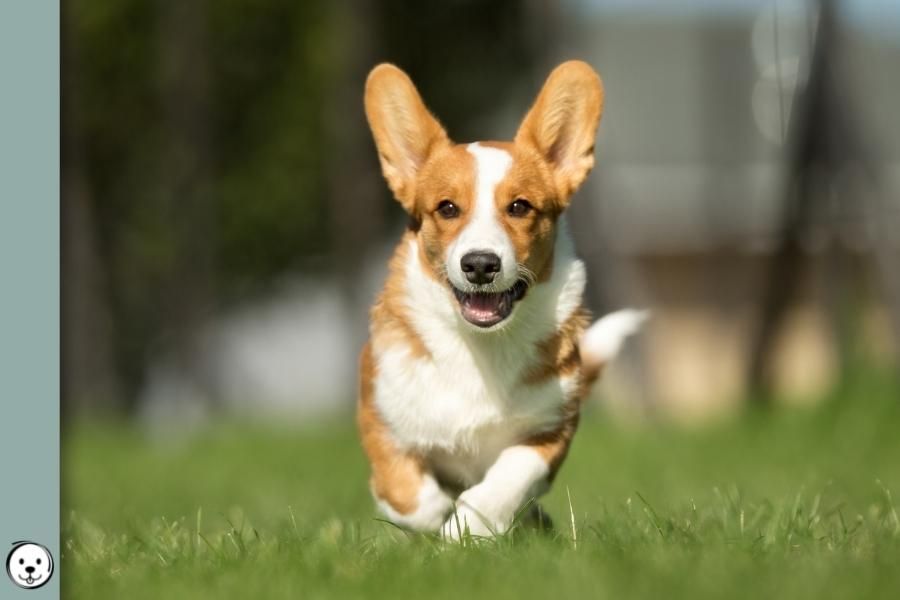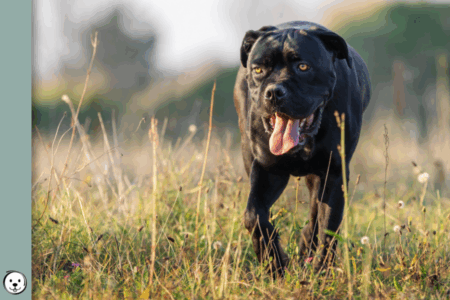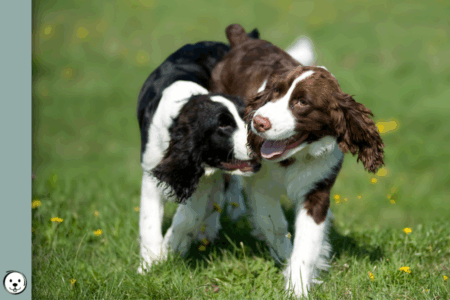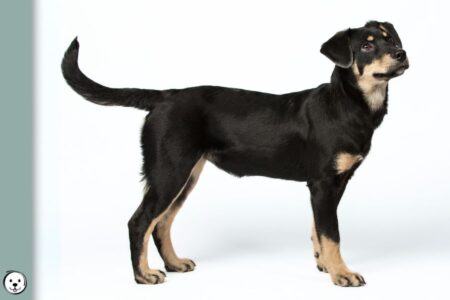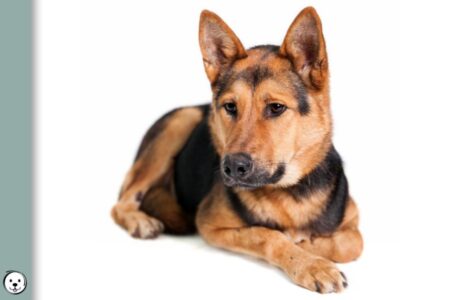Dominant yellow (also known as clear sable or fawn) describes a phenotype with a red base color with very little dark-tipped sabling.
What is Dominant Yellow?
Dogs with a dominant yellow base pattern have a solid cream, yellow, or red coat.
These dog has very little dark hair tipping compared to a shaded sable pattern.
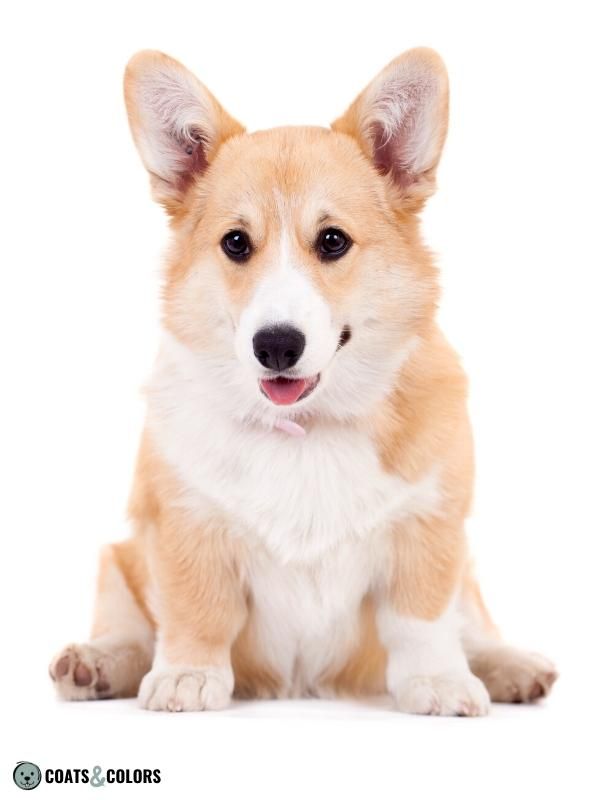
Some minimal amount of black sabling is often limited to longer hairs on the ears, along the topline hackles, or on top of the violet gland located on the upper surface of the tail.
Clear sable puppies are often born with more visible shading. But this overlay will fade or “clear” into a solid red by the time they get their adult coat.
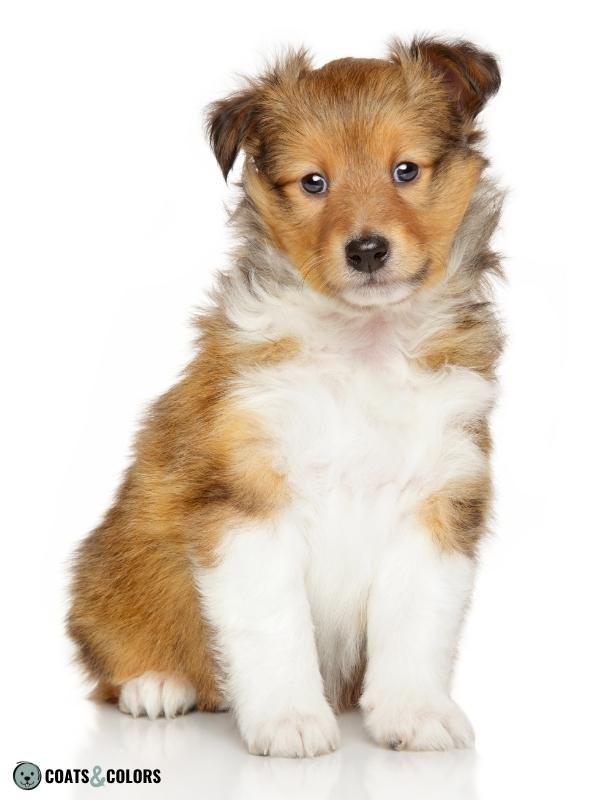
Clear Sable can hide traits that need some eumelanin to be visible (e.g. merle can be hidden). But clear sable dogs can still display brindle, masks, or countershading depending on their genotype.
Btw, very extended melanistic masks can sometimes cause chest or leg shading.
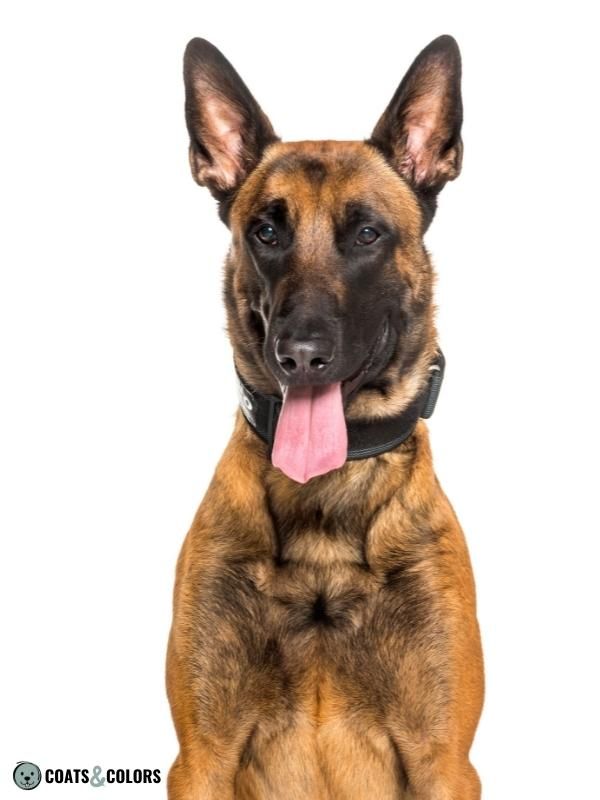
A solid red sable pattern can resemble a recessive red phenotype. A sable dog can have black in its coat, but not necessarily. A recessive dog, on the other hand, can never express eumelanin.
In comparison, dominant yellow dogs have dark whiskers and most often have a solid dark nose. Recessive red dogs have pale whiskers and often show fading nose pigment.
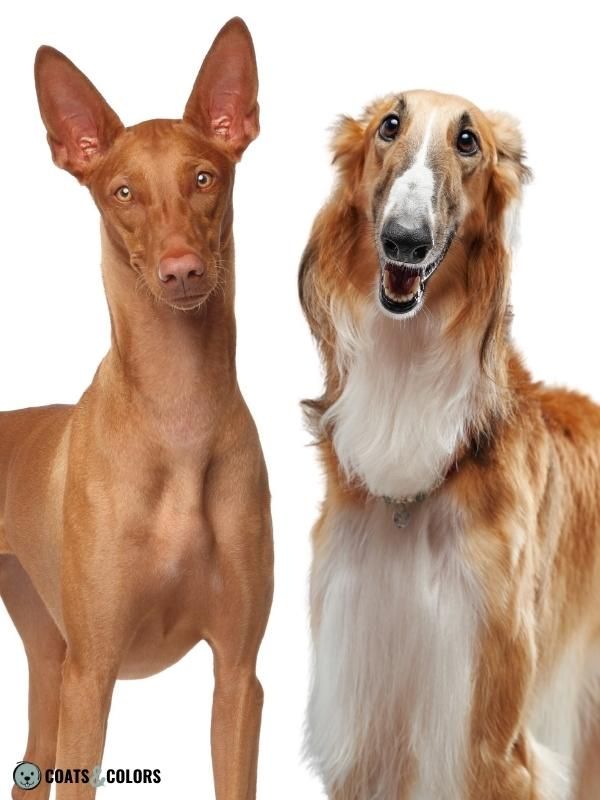
The ASIPDY allele (Ay)
The A-Locus is part of the canine pigment type switch. ASIP controls when and where phaeomelanin is produced. Different alleles at this locus cause a variety of different patterns.
The ASIP-related patterns can only be seen in dogs that are not dominant black (KB/-) at the K-Locus and not recessive red (e/e) at the E-Locus.
Until recently, genetic testing could only determine if a dog was sable. But both clear and shaded sable tested as Ay/-. But there was no way of predicting the amount of shading in a sable dog’s coat.
Newer science can distinguish between different A locus patterns, but the nomenclature of the newly characterized alleles at the A-Locus is not consistent between publications:
| ASIPDY | Ay | Dominant Yellow, Clear Sable |
| ASIPSY | Ays | Shaded Yellow, Shaded Sable |
| ASIPAG | aw | Agouti, Wolf Grey |
| ASIPBS | asa | Black Saddle |
| ASIPBB | at | Black Back, Tan Point |
| ASIPa | a | Recessive Black |
Dominant yellow (ASIPDY or Ay) is the most dominant trait at the A-Locus.
It is caused by a particular combination of two newly described ASIP gene promoters[1]:
The ventral promoter (VP) controls the extent of ventral tan markings. And the hair cycle promoter (HCP) controls how much dark hair banding the dorsal coat can produce.
A clear sable pattern is caused by a more active mutant of the ventral promoter (VP1). The increased expression of ASIP on the dog’s’s lower body causes extended ventral tan markings.
And a more active mutant of the hair cycle promoter (HCP1) causes hairs to have looooong bands of phaeomelanin with only a black tip and maybe a dark root.
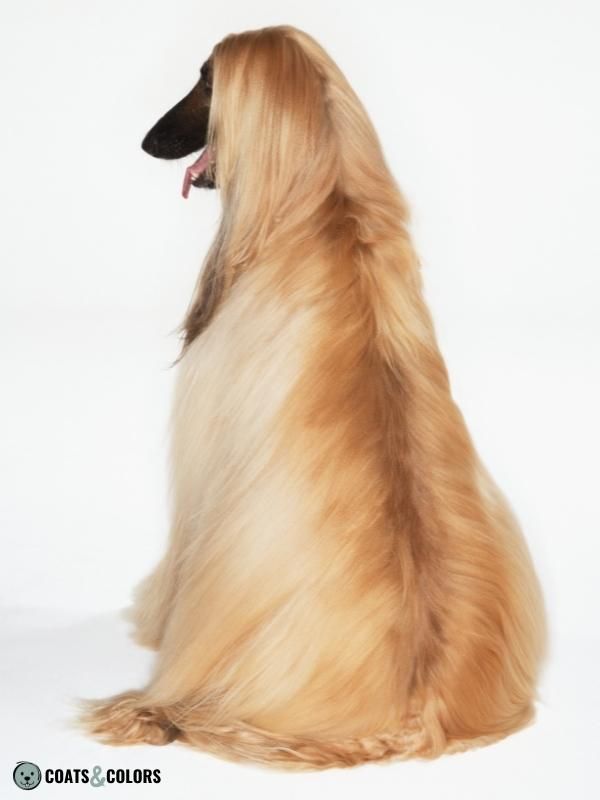
This combination of promoters or haplotype (VP1-HCP1) represents the new dominant yellow allele DY or Ay. Other haplotypes represent other alleles (see the A-Locus for more info).
| Phenotype | Allele | VP | HCP |
| Clear Sable | Ay | VP1 | HCP1 |
| Shaded Sable | Ays | VP2 | HCP1 |
| Agouti | aw | VP2 | HCP2 |
| Saddle Tan | asa | VP1 | HCP4 |
| Tan Point | at | VP2 | HCP3,4,5 |
| Recessive Black | a | (VP2) | (HCP3) |
Ay is the top dominant variant in the allelic series at the A locus. Meaning, dogs with an Ay/- genotype can be carriers for any other A locus variant, e.g. Ay/at or Ay/aw.
The A locus variants often show co-dominance.
A heterozygous clear sable dog such as Ay/at can sometimes produce a darker pattern.
The newly testable Ays variant is especially interesting for sable breeds that do not like sabling. See, dogs with clear sable can produce shaded sable puppies (Ays/Ays) if both parents are carriers (Ay/Ays).
Clear Sable Patterns
Clear sable is characterized by a solid or almost solid phaeomelanic coat. Sable puppies can still have a moderate amount of dark hair tips before they clear into a solid red coat.
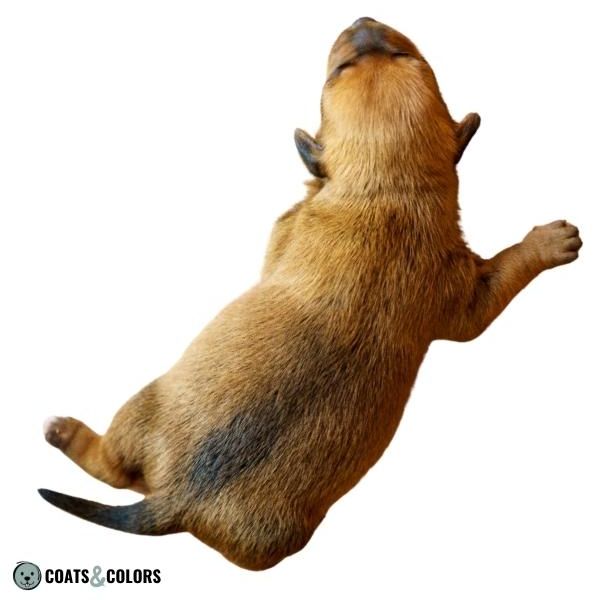
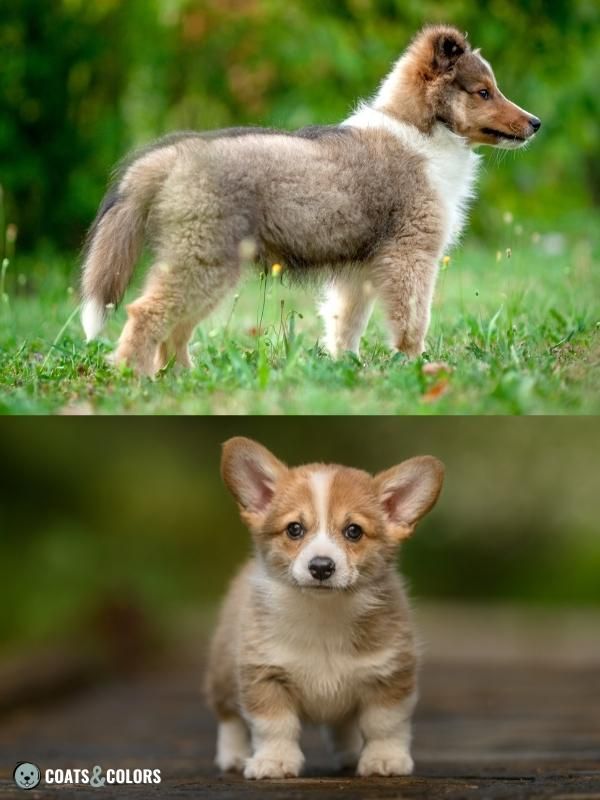
Color Intensity
The base color of a dominant yellow dog can show varying color intensities of phaeomelanin. There are different traits involved that affect red density in a dog’s coat (meaning, intensity is polygenic).
Phaeomelanin can have any shade in the range from cream, yellow, orange, or red. It’s pretty normal to see some variation of color on the same dog, e.g. it is pretty common to have denser pigment on the ears.
It seems to be way easier to breed for whitish cream colors in recessive red dogs compared to sables.
There are even some breeds (e.g. Shiba, Chow) where all sables have red pigment and all e/e dogs have off-white pigment. However, it’s still a mystery how intensity got linked to the pattern in these breeds.
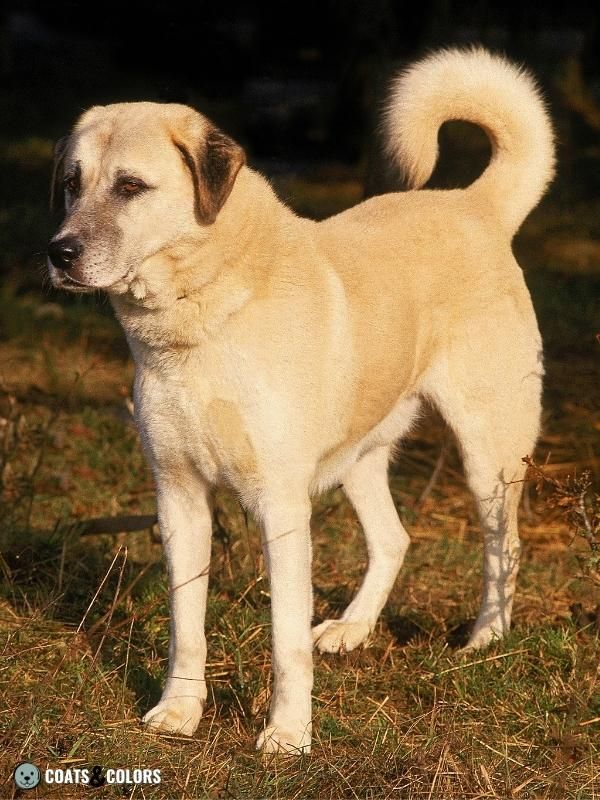

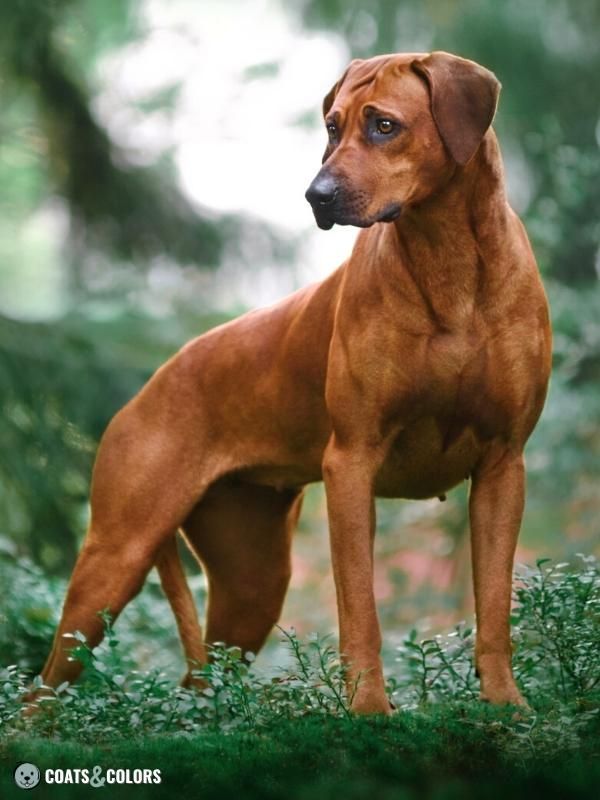
Eumelanin Base Colors
Phaeomelanin is only found in a dog’s coat.
The skin spotting, eye rims, lips, nails, and nose get their color from eumelanin.
Dogs with a black-based sable pattern will have a black nose.
Other loci (see the B-Locus and D-Locus) can change the base color of eumelanin to liver, blue, or lilac.
But even very small amounts of dark hair tips can give dogs a brown or blue overcast. Dogs with brown-based clear sable can be found in Dogue de Bordeaux or in some Rhodesian Ridgebacks.
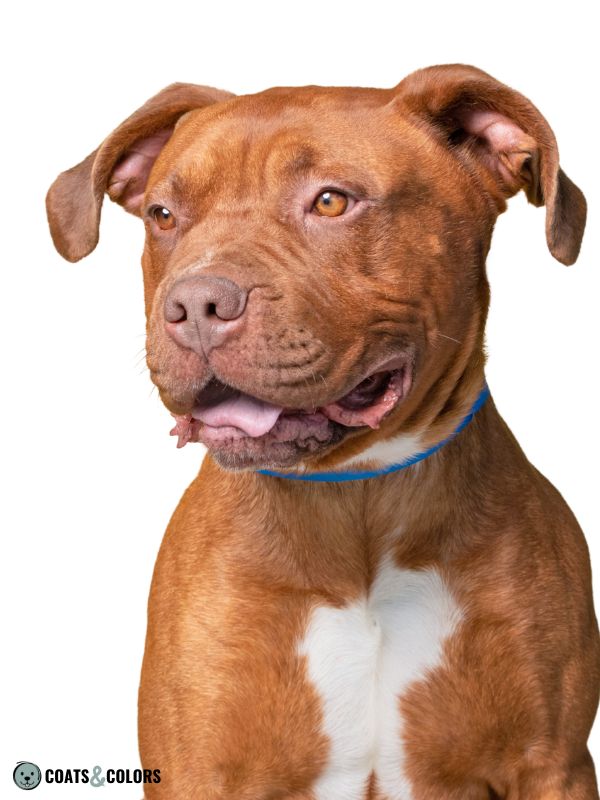
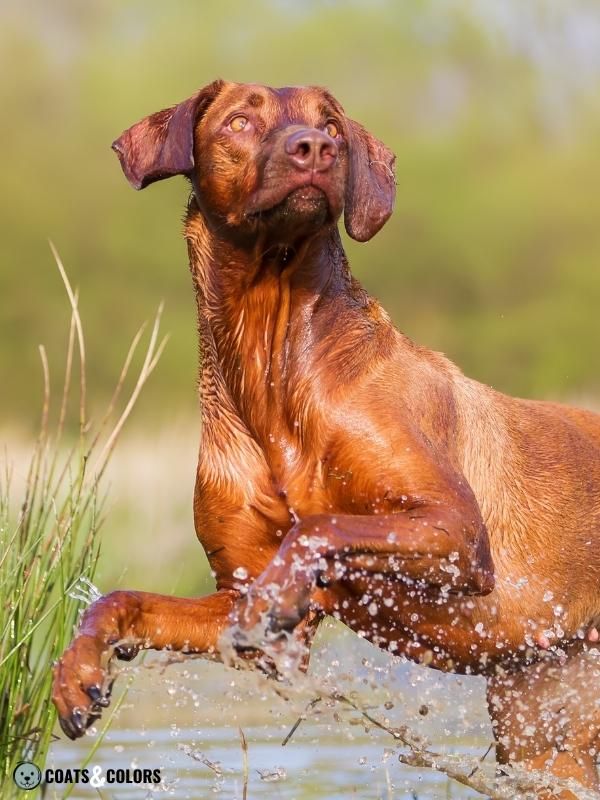
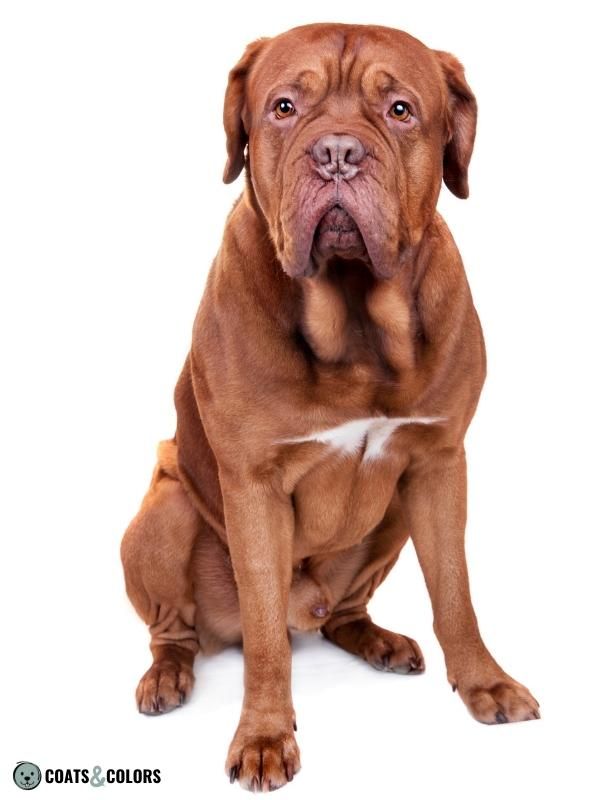
Blue-based clear sable quite commonly occurs in breeds like American Staffordshire Terrier, Cane Corso, Whippet, Greyhound, etc.
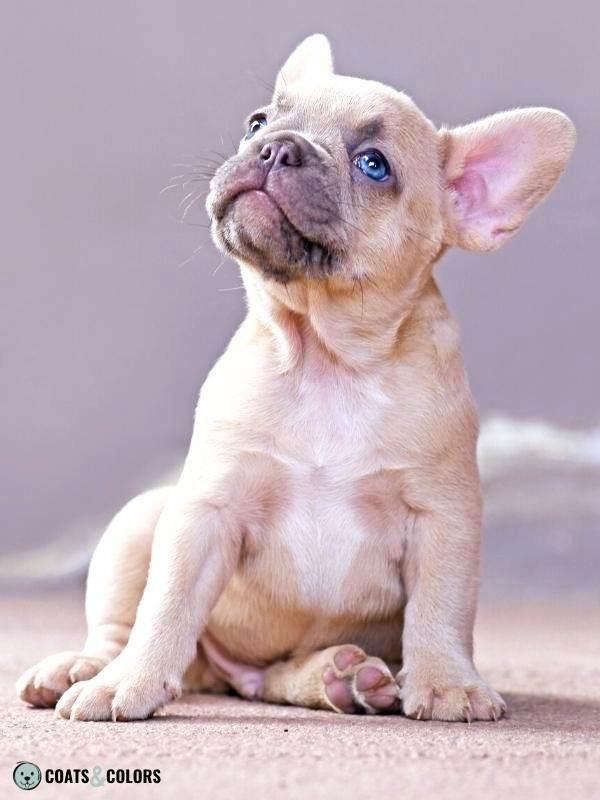
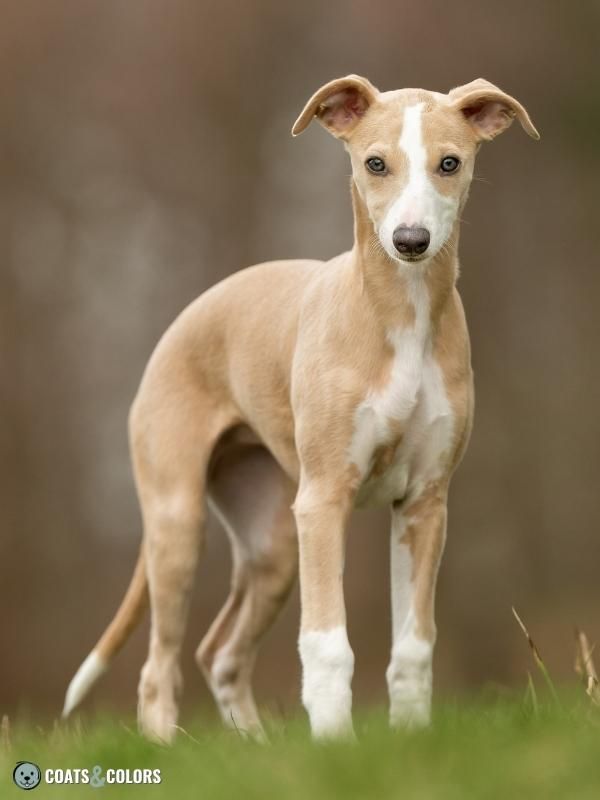
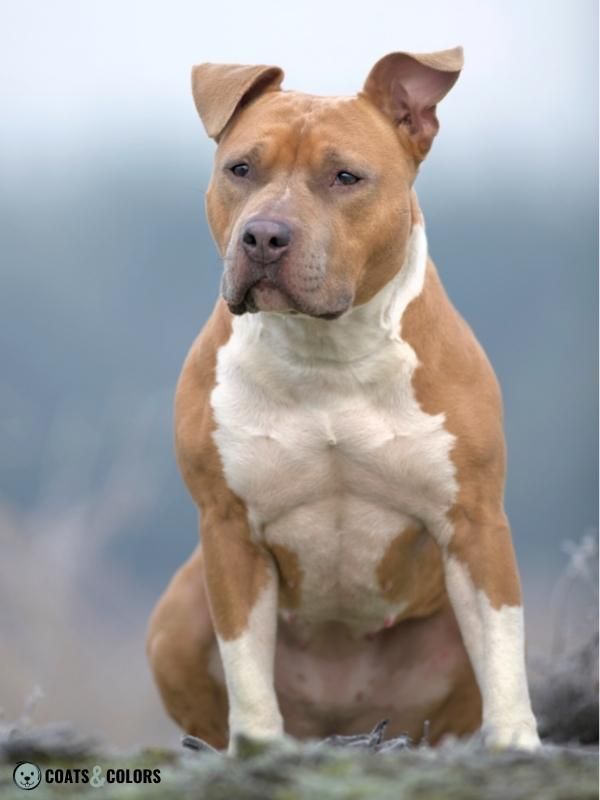
Lilac-based clear sable is quite rare in purebred dogs since very few breeds have both brown (b/b) and dilution (d/d). It’s way more common in color-bred dogs.
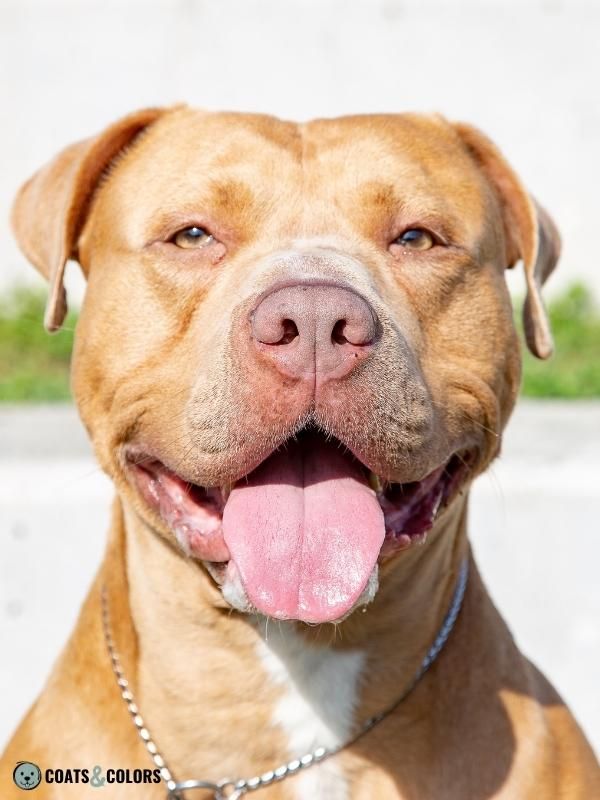
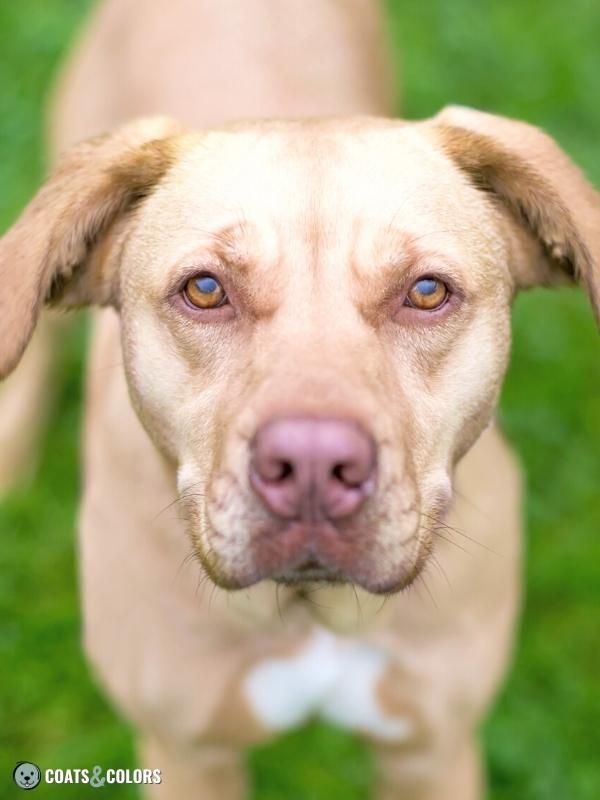
Clear Sable & Masks
A melanistic mask is caused by Em/- at the E-Locus.
Masks add eumelanin on a dog’s muzzle.
They can sometimes extend beyond a dog’s face and add more shading to the chest or legs.
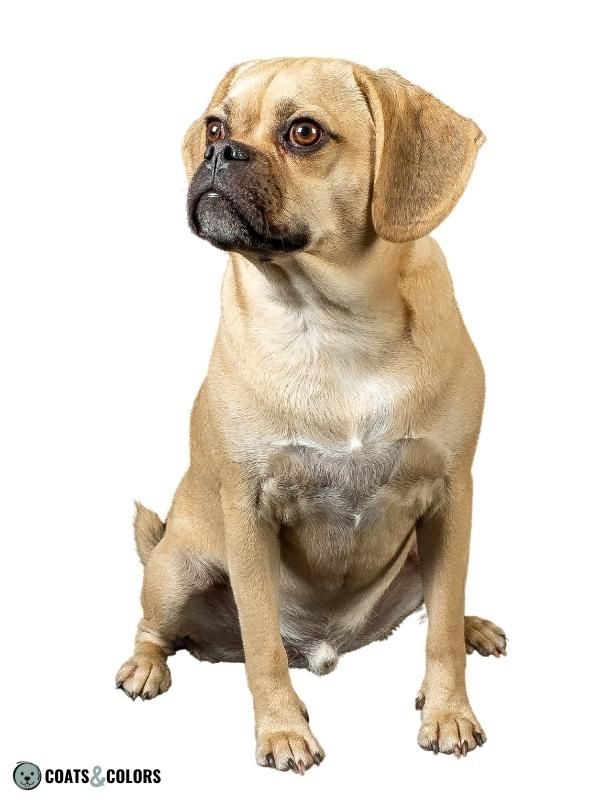
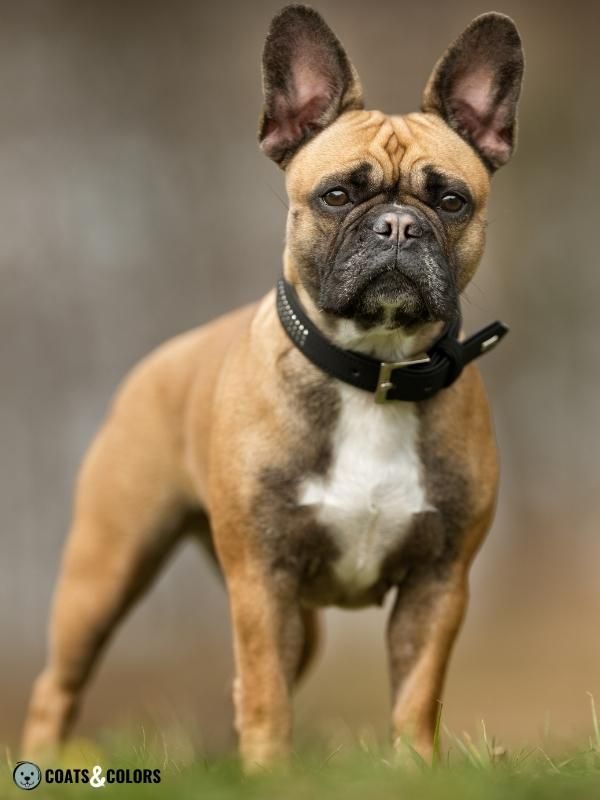
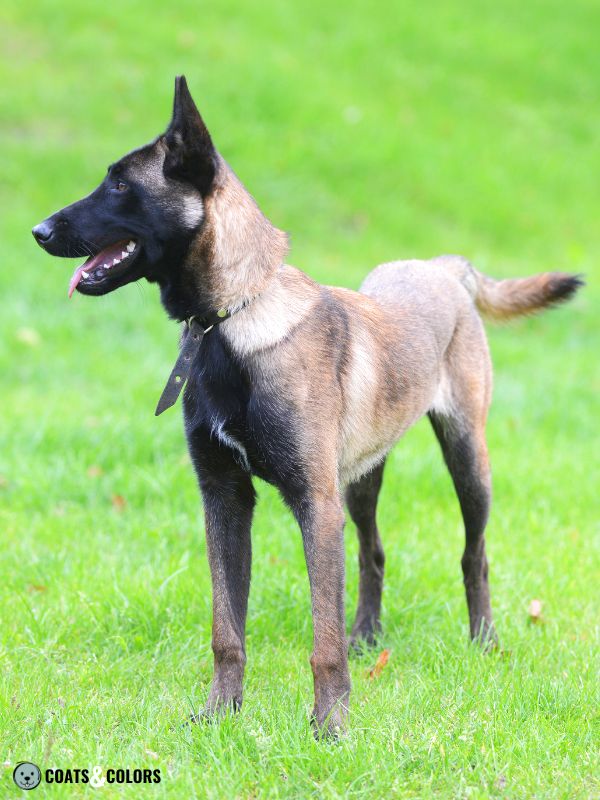
Clear Sable Brindle
Brindle is caused by the kbr allele at the K-Locus.
Brindle adds vertical stripes of eumelanin to any areas with phaeomelanin.
This turns a sable pattern into a “full-body brindle”.
There are many possible variations of brindle.
Brindling can be minimal or so dense that it makes a dog’s coat appear very dark.
The dark stripes in a brindle pattern get their color from eumelanin.
This can make traits such as Merle or graying visible in the coat.
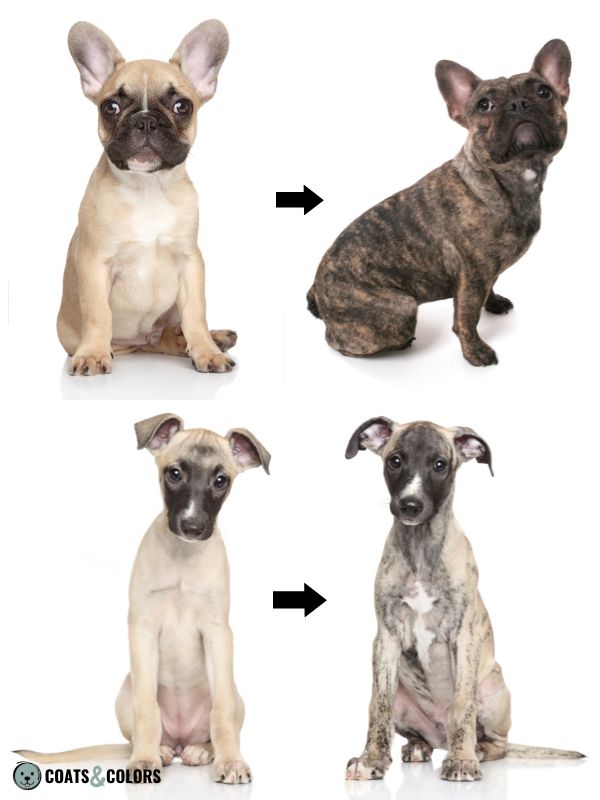
Dominant Yellow & White
White spotting is caused by areas without any pigment.
White coat erases parts of a dog’s coat color.
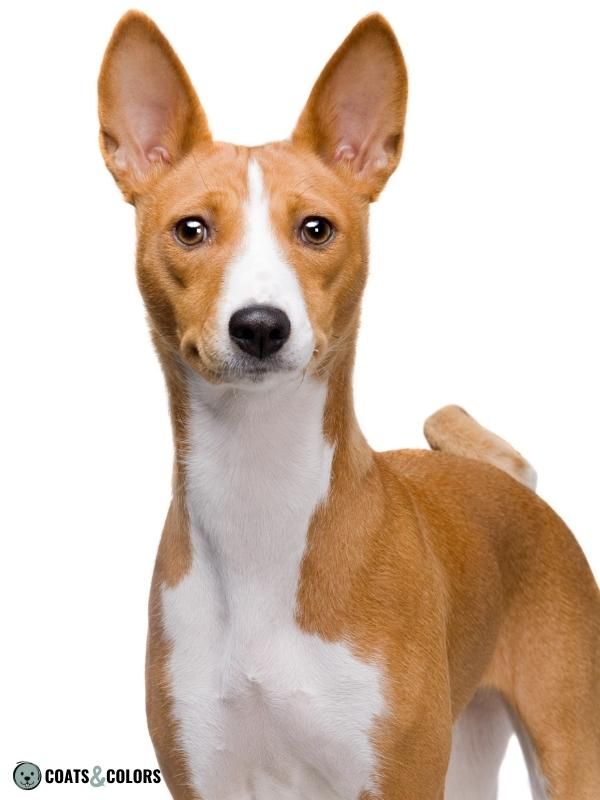
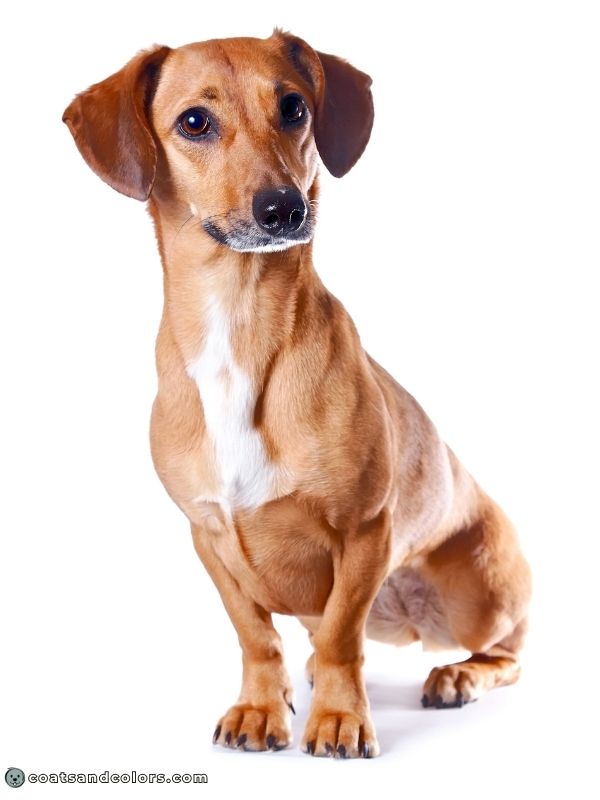
An interesting thing sometimes happens in dogs that combine sable, white spotting and melanistic masks.
The black pigment inside the sable patches seems to pool at the borders of the color patch and creates an interesting pattern called watermarking or etching.
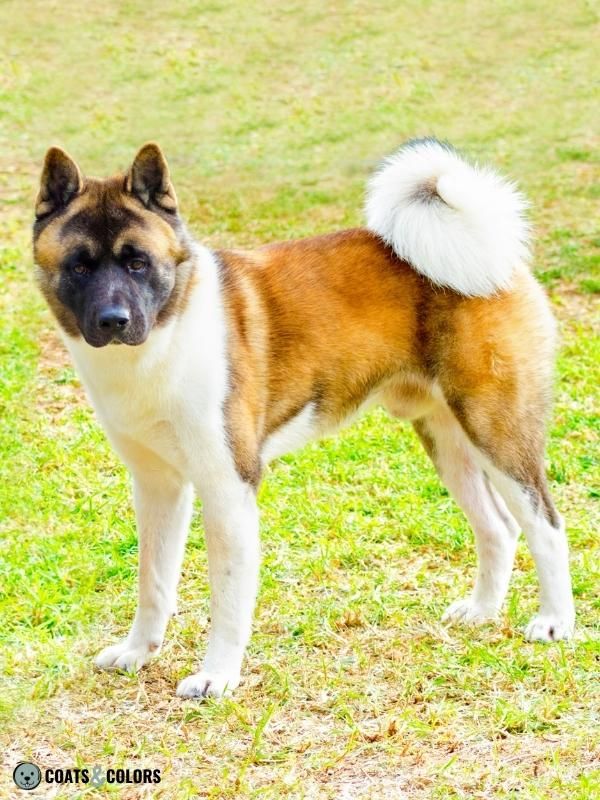
Dominant Yellow & Ticking
Ticking and roan causes mottles or hairs with normal pigment to grow inside of white markings.
A sable & white pattern with ticking is the standard color of Red Heelers!

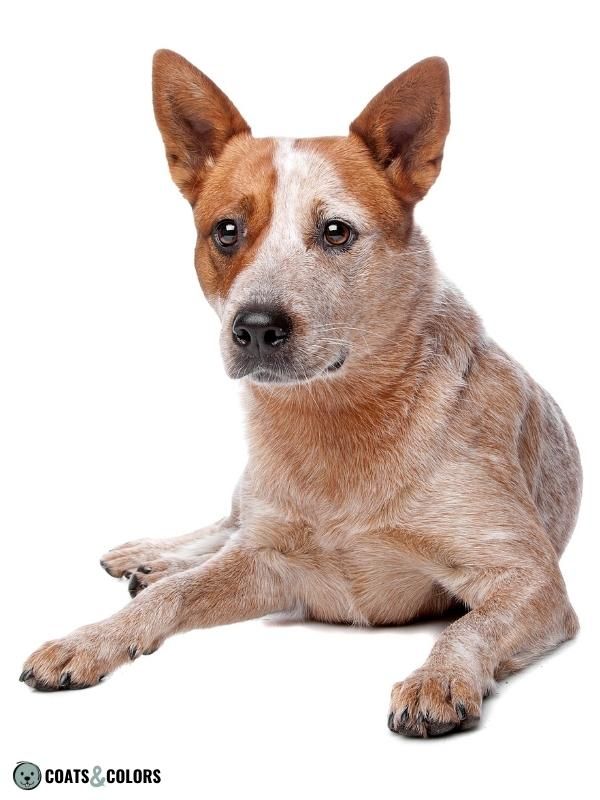
Countershading
Sable can express with lighter shades of red on the ventral body, this is called countershading.
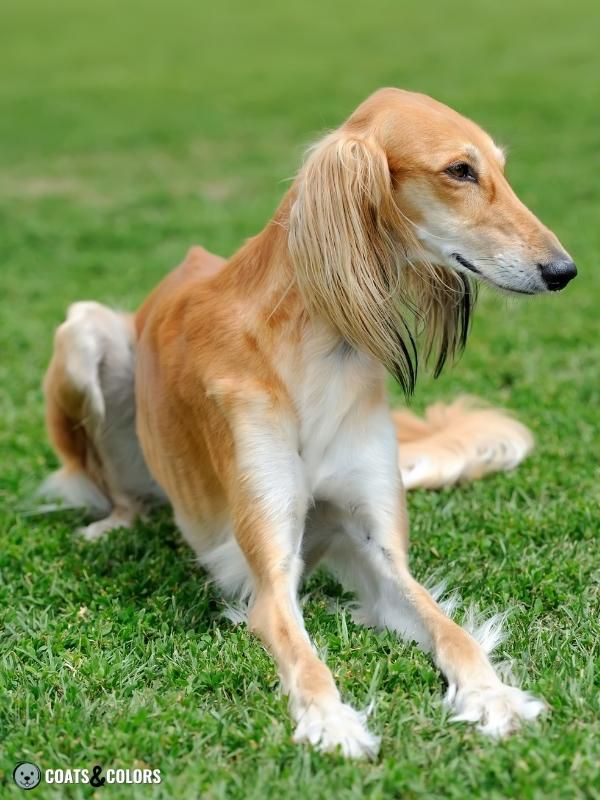
Any countershaded area can be so pale it looks almost white. The distribution roughly follows the placement of tan markings in other patterns. That is, on the belly, lower legs, neck, cheeks, eyebrows, and under the tail.
In some Asian spitz breeds like Shiba or Akita Inu, these lighter markings are called urajiro. They are thought to be some refined version of countershading and can form a very crisp pattern.

Sable Merle
Clear sable can hide patterns that need some eumelanin to be visible. Once all the dark overlay has cleared from a sable puppie’s coat, there is not too much canvas left for Merle to express on.
Breeders should be cautious not to accidentally assume a dog was non-Merle because it looks solid red!
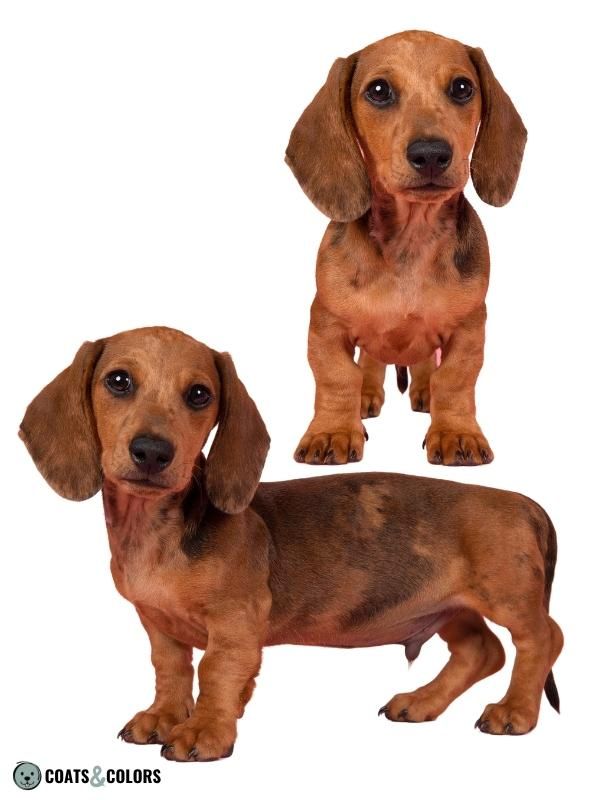
Dog Breeds with Dominant Yellow
Dominant yellow is present in many breeds.
Here are some examples of clear sable dog breeds[1]:
- Afghan Hound
- Akita
- American Bulldog
- American Bully
- American Staffordshire Terrier
- Anatolian Shepherd Dog
- Australian Cattle Dog
- Azawakh
- Basenji
- Bloodhound
- Boerboel
- Border Terrier
- Boxer
- Bullmastiff
- Bull Terrier
- Briard
- Cane Corso
- Chihuahua
- Chinook
- Chow Chow
- Collie
- Dachshund
- Dandie Dinmont Terrier
- Danish-Swedish Farmdog
- Dogue de Bordeaux
- English Bulldog
- French Bulldog
- Great Dane
- Greyhound
- Irish Soft Coated Wheaten Terrier
- Irish Terrier
- Irish Wolfhound
- Leonberger
- Magyar Agár
- Mastiff
- Norfolk Terrier
- Norwich Terrier
- Pekingese
- Pomeranian
- Pug
- Redbone Coonhound
- Rhodesian Ridgeback
- Saint Bernard
- Scottish Deerhound
- Shar Pei
- Sheltie
- Shiba
- Skye Terrier
- (Small) Swiss Hound
- Tibetan Mastiff
- Tibetan Spaniel
- Welsh Corgi
- Whippet
Learn More
Links
[1] Bannasch, D.L., Kaelin, C.B., Letko, A. et al. Dog colour patterns explained by modular promoters of ancient canid origin. Nat Ecol Evol 5, 1415–1423 (2021). https://doi.org/10.1038/s41559-021-01524-x
Image Credits
© Azaliya/canva.com

Hi! I’m Steffi. I am a biologist and a big time dog nerd. You are curious about coat color genetics? You’ve come to the right place! Read more.

